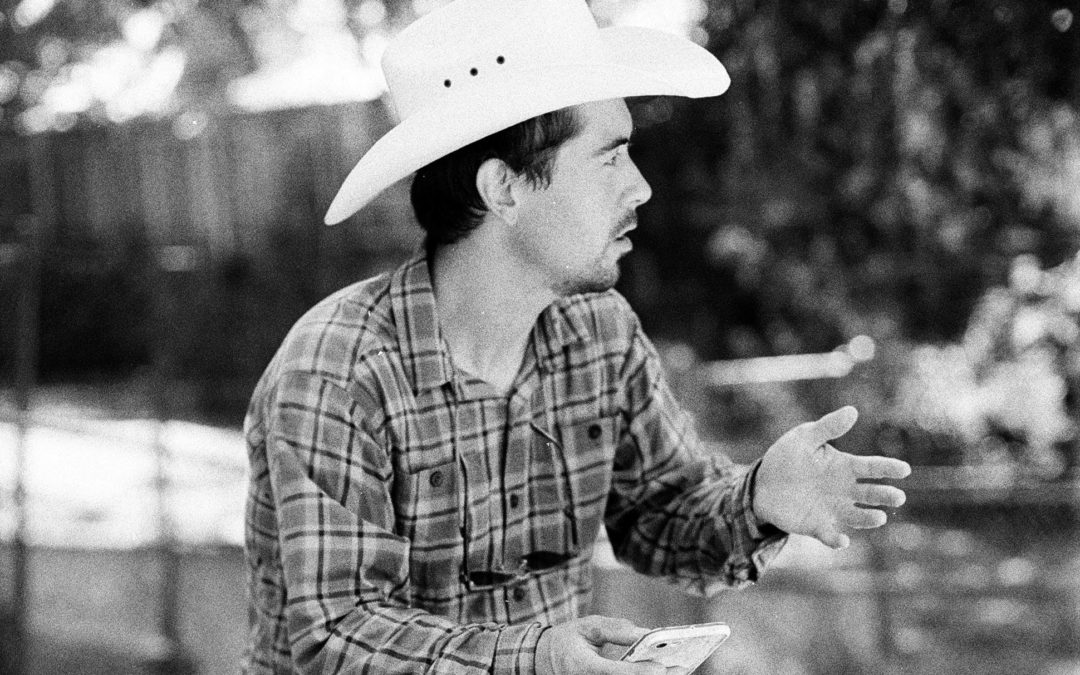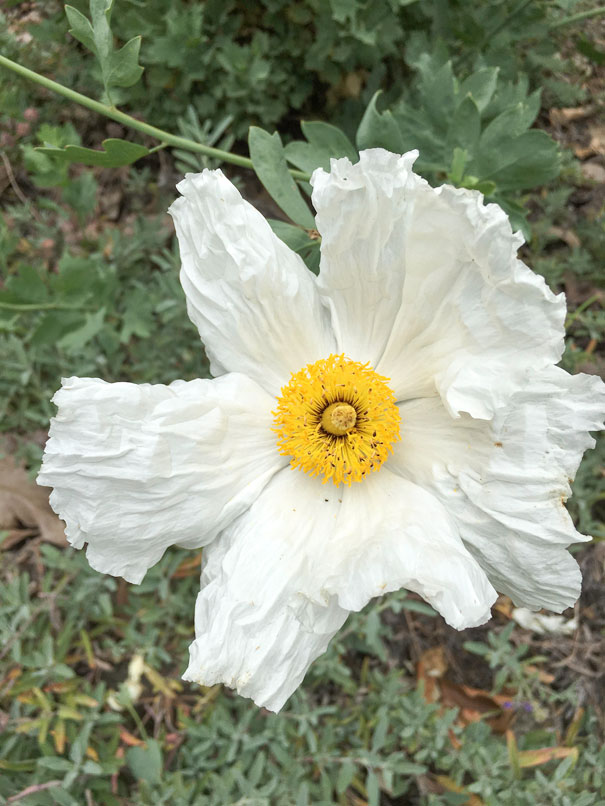In partnership with LA Nature for All, Earth Share is a series of conversations on IGTV with the goal of sharing knowledge and inspiration with organizations and individuals caring for the Earth. The following is a partial transcript of our conversation with Tim Martinez, Land and Program Administrator at the Arroyos and Foothills Conservancy. It has been edited for clarity and length.
Click here to watch the complete fifth episode.
Paloma Avila: We would like to start by asking you, what does nature mean to you?
Tim Martinez: What a question, you know? I think about nature all of the time, but what does nature itself mean? Really, I see nature as our underlying reality.
We do separate ourselves from it a lot in our civilization, where a lot of things can be artificial. We can be abstracted away from nature. But when I think “what does nature mean to me?” it seems hard to be truly separate from nature. It’s not just the trees and ecosystem. It’s all of reality. Ultimately, I think it’s hard not to be in nature.
When I’m out in a more-or-less intact ecosystem or native habitat, that’s the highest representation of reality and natural order. This is the environment that all life evolved into and so, for me, this is the highest manifestation of reality. There’s so much to be learned from that.
PA: Given that the natural order is the highest form of reality within our local landscape, where and what were your earliest memories within that context?
TM: That’s another great question. You mentioned some of the work that I’m involved in, which is trying to introduce young people to nature, and one of the reasons that is so important to me … is because of my experiences in nature.
I was very fortunate in that my mom brought me and my younger brother to the lower Arroyo nature park in Pasadena [when we were children]. The low flow streams had just been installed, brand-new, so there was flowing water, low-flow streams, saplings, trees growing, and little tadpoles. Even though it’s a bit artificial, I enjoyed the little restored section of the arroyo. It was magical for me as a child.
I grew up in a cul-de-sac in West Pasadena up against the hills, at the top of my cul-de-sac was a big county chain link fence… [my friend and I] slipped under the chain link fence and passed the debris basin into this canyon and hills… there was a little spring, like a stream just gushing from the hill. Magical. I used to dream about that spring. I couldn’t believe it was right there. I couldn’t believe I lived nine years of my life and had never seen something like that before.
These experiences were so formative for me. Now I get to help save places like that.
Levi Brewster: Tim, can you speak more about that work that you do? I know you work with Arroyos & Foothills Conservancy and Pasadena Parks and Recreation. Do you want to talk about the specifics of that work?
TM: My job is that I’m the Program and Land Administrator for Arroyos & Foothills Conservancy, which is a nonprofit land trust based in Pasadena. Our mission is to preserve land, oftentimes that is under threat of development. We really started off just to preserve land in order to save nature. But as the years have gone by, a big focus on ours is to really connect a lot of our fragmented areas like the San Rafael Hills and the Verdugo Mountains. These are all being surrounded by freeways, roads and development, and they’re becoming like islands of habitat where wildlife can’t get in or out. … Maintaining and enhancing wildlife corridors is the number one way we can preserve biodiversity in the face of climate change.
My job specifically is that I help steward the land, so I take care of the land, doing annual fire fuel reduction, overseeing habitat restoration, and trail work. I basically help the land get better, take care of it, get it back to its native habitat. I also oversee all of our programs to connect the communities that we serve with our protected lands … So people in local communities can have a sense of ownership in their own backyard and help be involved in these special paces and help take care of them.
I am also a commissioner in Pasadena. I am on the Recreation and Parks commission … I really want to be an advocate for balancing nature with recreation. It’s so necessary for our health and well-being in so many ways. I want to make sure these place are where we can recreate but that make [also] our community healthier. Kind of like Arlington Garden, right, that provides habitat. Our parks can be very dynamic. I actually think Arlington Garden is an excellent example of how dynamic an open space, like a park, can be. It can provide for people but also for saving water, biodiversity, birds and pollinators.
LB: It would be really exciting to see all of our parks look more like Arlington in the way Arlington does all of those things you are describing and is also free and open to the public.
TM: Absolutely, and I have to share: I have six summer interns right now…. And maybe a week or two ago we went down to Arlington. After we went on our tour of Arlington and looked around for over an hour, all of my interns, who are mostly high school kids, said “I never saw a park like this before …” I think it speaks volumes that these are teenagers and are used to turf and ornamental hedges and, for them, it was a totally different experience … to go to a place like Arlington. Arlington is an excellent example of what our parks could, and should, look like.
PA: To speak more on the idea of community in all its various forms. How do you feel like you are able to support the community you are in and how does the community support you and the work you are doing?
TM: I’ve been trying to do that for years, and luckily for me, it ended up leading to a career. I try to see where I might fit in and be able to make a contribution. One thing always leads to the next. The most important thing is to realize: What are you passionate about? What do you care about? And find like-minded people. I have a lot of mentors, a lot of people who I’m friends with, who I work with in the community… all collaborating together towards a better vision of things.
PA: The next question is something we have been thinking a lot about recently and that is the idea of equity and access to the outdoors for everybody in our community. How do you see that play a role in your work?
TM: I’ve been discussing from my experience growing up that I have been very privileged to have access to nature my entire life. It was formative for me, it was profound. I like to say it planted seeds. Not everyone has that access. That is an issue of equity first and foremost. Being a Recreation and Parks commissioner, I know that not everyone has access to parks.
There’re so many studies that show having outdoor education, which is not something all schools have, helps students perform better. They perform better in a variety of other subjects. When I think of equity, I think of how profound and positive an impact access to nature can be. Not everyone has that, and I think that they should. They deserve that.
I don’t think there should be one bad or unhealthy place on this planet. Every community should have nature. Every community should be healthy. And unfortunately that’s not the case. I think that work with equity is to make sure we move in a direction where that is the case.
LB: I think it’s interesting, the idea of bring young people and people who are living in the city and making access possible to our local foothills and mountains. You double down on that idea when you [talk about bringing] our foothills and mountains back into the city.
One of the questions from our audience was in addition to planting native plants, what can we do in our parks and in our homes to create spaces that support wildlife?
TM: I would like to see civic leaders, people working within city government connecting more with members of the community who are already doing this work. There’s so much grassroots work being done. There are so many people who would love to have a community garden; there are so many people who would love to tend native gardens in our city parks; or be part of the planning process. [Regarding the audience question] We can implement things like bioswales and native plants and bring nature back into the city and back into parks. That’s going to be such a resource, not only for education, but with all the other benefits of habitat, water saving, climate resilient landscapes.




Recent Comments